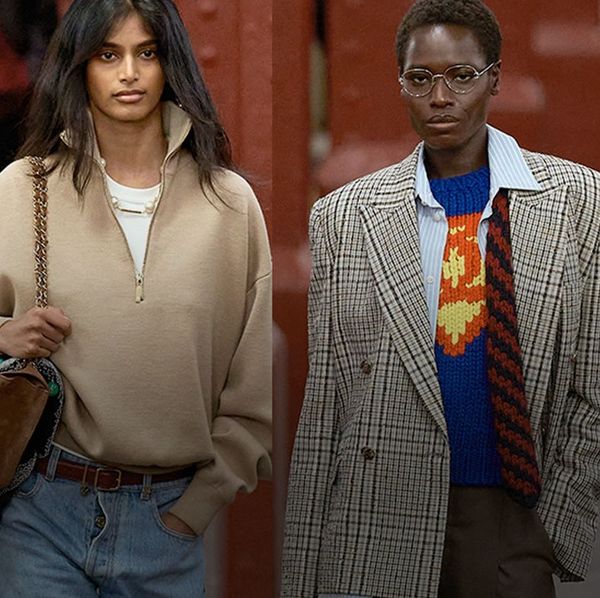The Conflicting Presence Of Coquette On The NYFW Runways
Dressing conservatively poses the question of actual conservativity—even if it’s just a gingham dress.
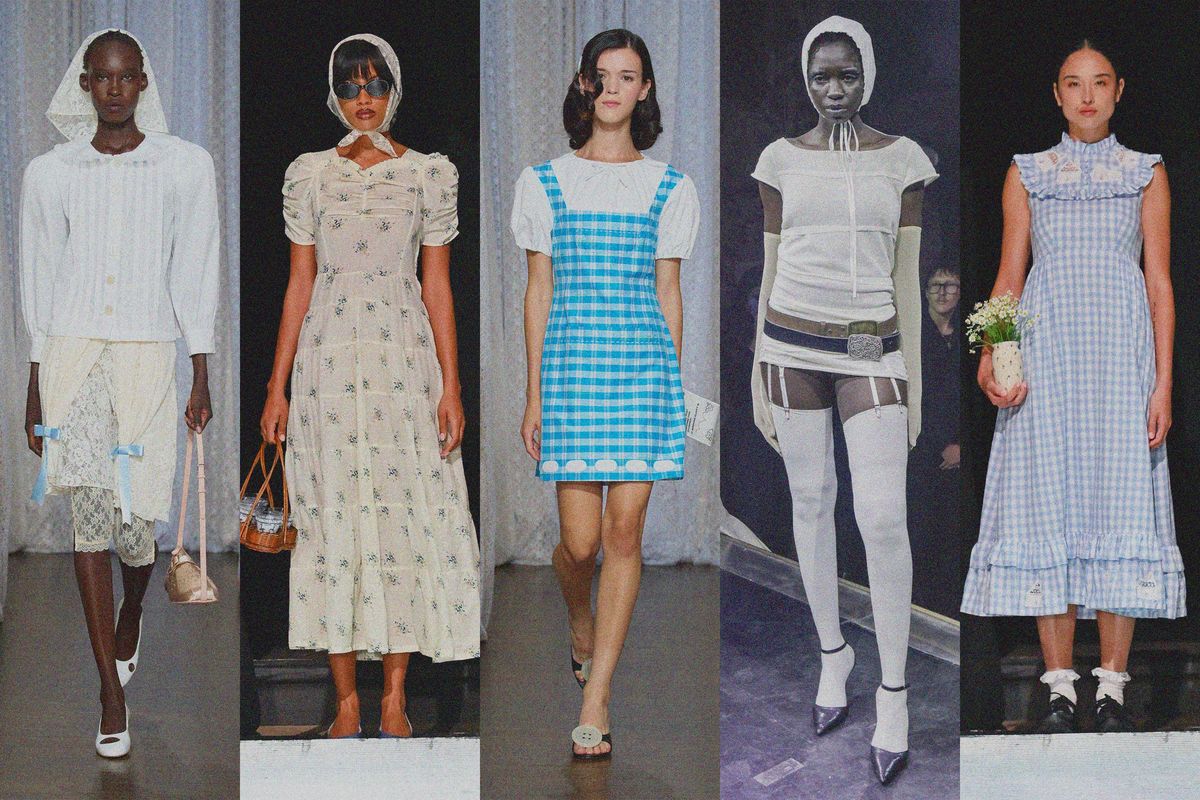
One of the biggest trends to break through the 2020s micro-trend hellscape has undoubtedly been coquette—the hyper feminine aesthetic that draws on girly silhouettes and elements from the Rococo and Victorian periods. Before coquette had its name, brands like Miu Miu, Vivienne Westwood, and even John Galliano explored the romantic silhouettes that are commonly associated with the trend, while modern designers like Simone Rocha, Sandy Liang, and Liushu Lei and Yutong Jiang of Shushu/Tong built their brands on the the design codes of coquette. At New York Fashion Week this Spring/Summer 2026 season, coquette was everywhere on the runways via girlish, playful, nostalgic, ultra-feminine shapes at Sandy Liang, Tanner Fletcher, and even Calvin Klein Collection and Elena Velez. (On the flip side, there were the upper middle class sleek lines and Philo-esque uniformity from brands like Tibi, Khaite, Altuzarra and Diotima.)
Fashion and politics have always been intertwined, and America has entered a particularly rocky period politically. One that is more vocal about totalitarianism and conservative ideas than ever, which, subsequently, means that women’s liberation is once again a fickle concept in the eyes of those in control.
For her Spring/Summer 2026 collection, Elena Velez made it clear to Vogue that this was not the energy she wanted to claim for the show, which featured dainty headscarves and dirtied cotton corsets, whereas at Sandy Liang, the uplifting mood was a nod towards childlike wonder, personal treasures, and play. Tanner Fletcher’s show was all heart, and the nostalgic prints and vintage tea-dresses worked here because of that. In the midst of such a fraught moment in geo politics, heart is exactly what we could all use a bit more of at the moment.
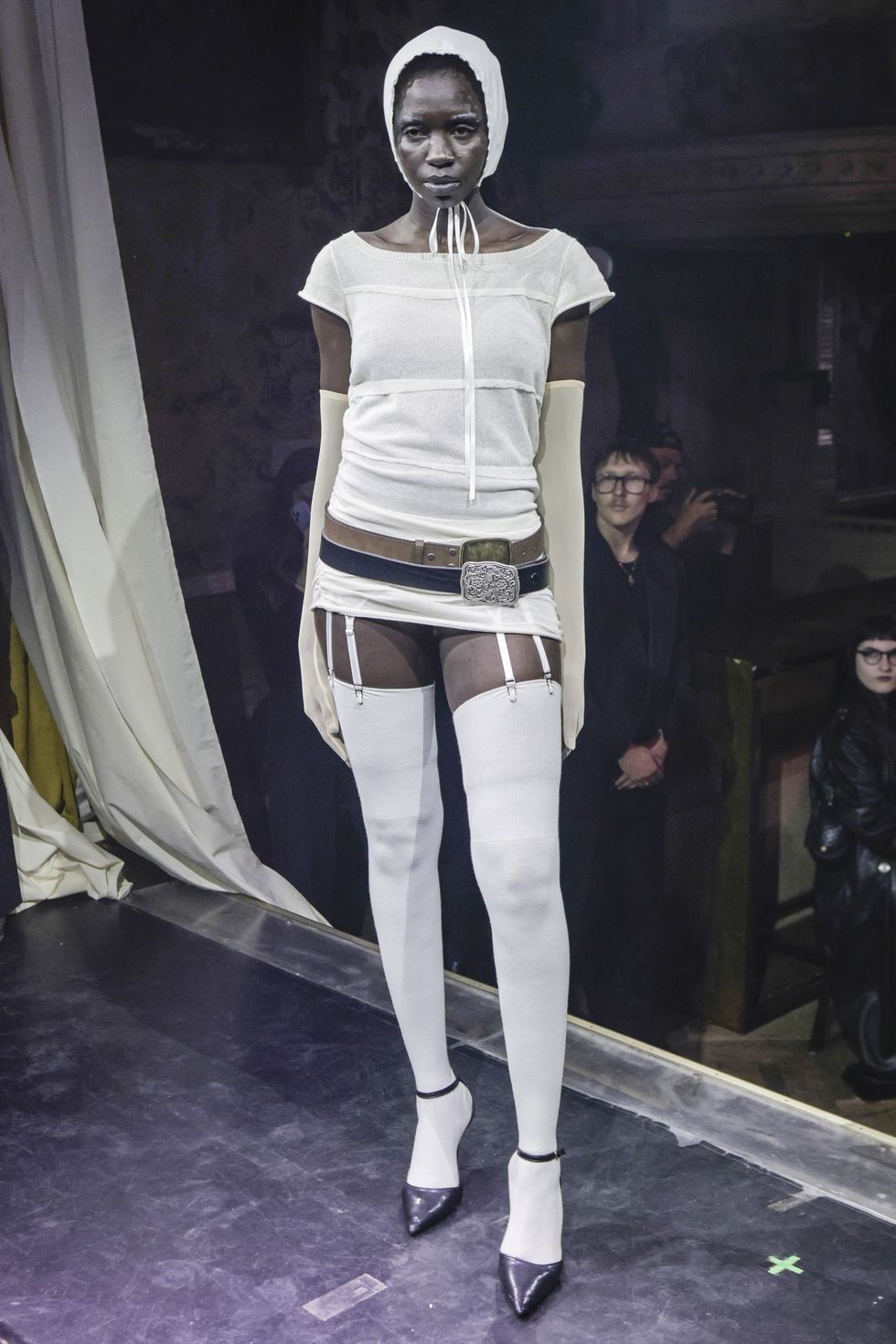
Elena Velez Spring/Summer 2026
Getty Images
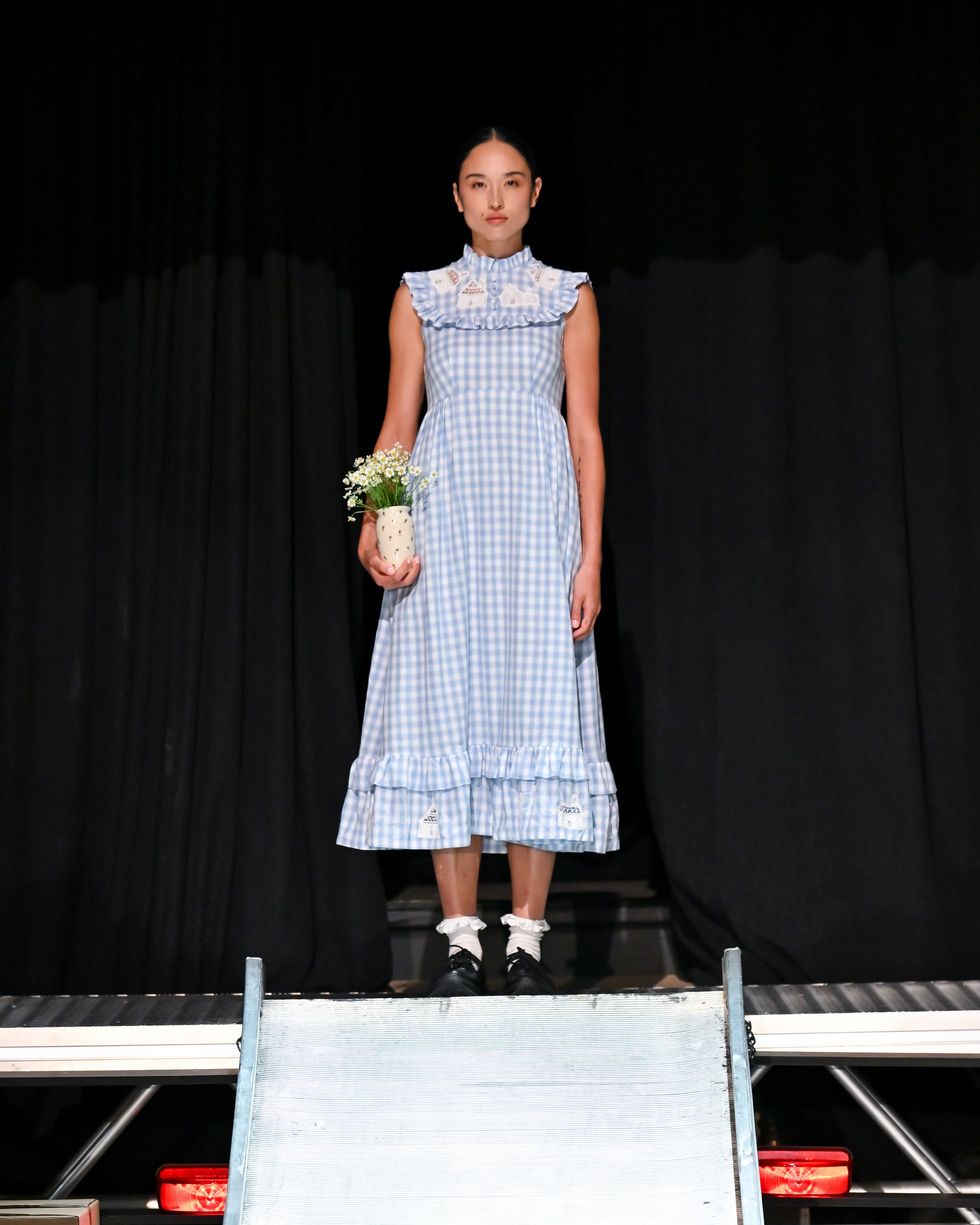
Tanner Fletcher Spring/Summer 2026
Getty Images
It is easy, here, to see examples of coquette as a fun, harmless way to hark back to our childhoods and the sentiment of girlhood that surrounded what we had—or wish we’d had—in our youth. It’s likely what many of the designers intended, and was clear in the delivery, too. However, when we’re up against a political landscape that is glorifying trad-wife content and the rolling back of women’s rights, I can’t help but get an eerie feeling when the demand for picnic dresses, cutesie headscarves, and peter pan collars is on the rise in the era of a president who has pledged to be “the fertilization president.” From a sexualization perspective, the idea of girlishness—a key tenant of coquette style— has always been tainted by the male gaze, but when the need for sexuality is replaced by the need for control over our bodies, where does coquette fall on the scale of conservatism?
2024 and 2025 have been particularly interesting moments on the internet when it comes to the influx of trad-wife content. Hannah Neeleman’s Ballerina Farm account has almost 11 million followers, while Nara Smith is at 12 million followers; both women are often dressed in coquette style clothing on a regular basis while prepping food from scratch for their large, young families.
None of which is inherently wrong, but in 2025, anything that leans towards the conservative ideals the right holds towards women can begin to feel a little indicative. When personal style is so intricately tied to our identities, dressing conservatively poses the question of actual conservativity—even if it’s just a gingham dress.
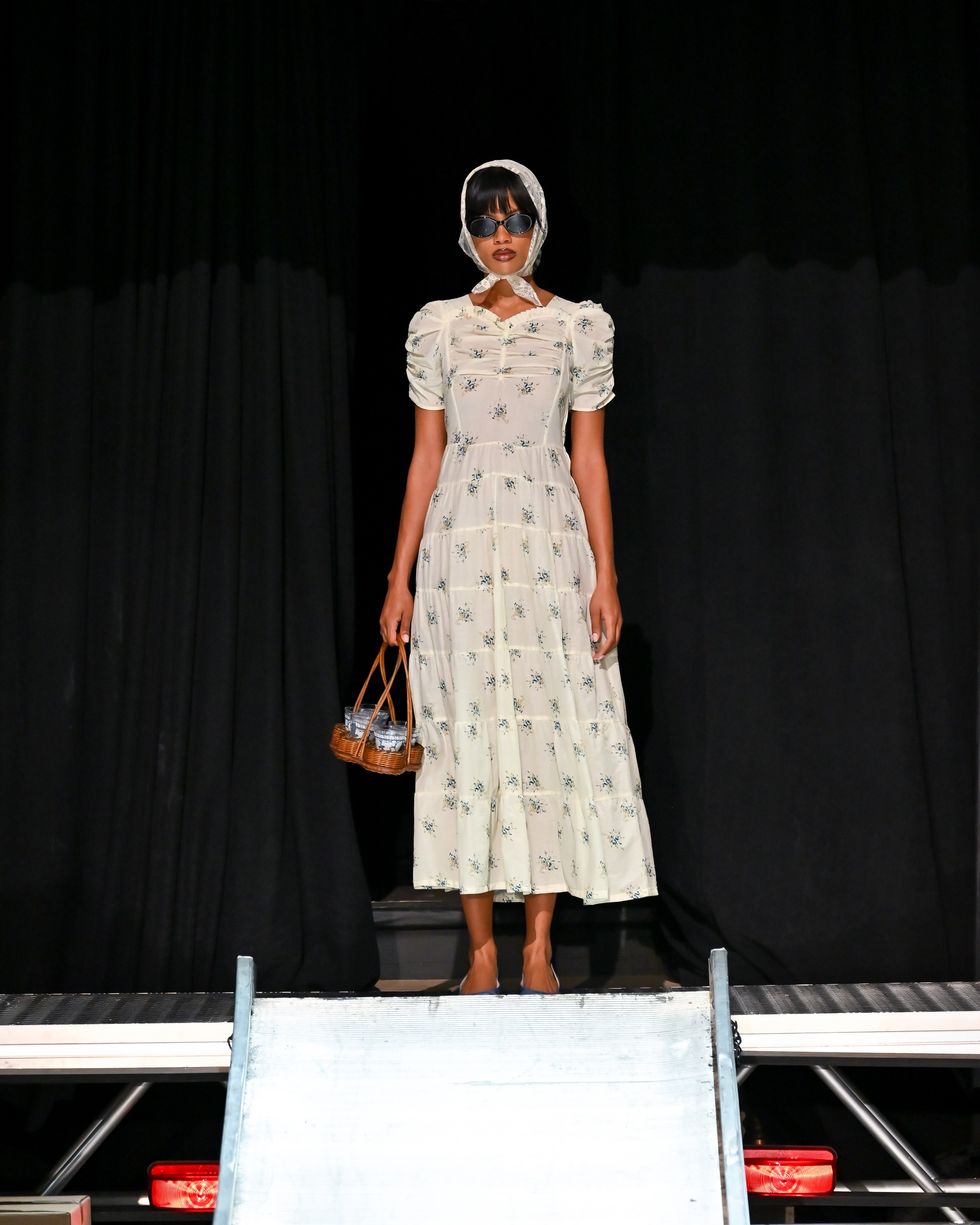
Tanner Fletcher Spring/Summer 2026
Getty Images
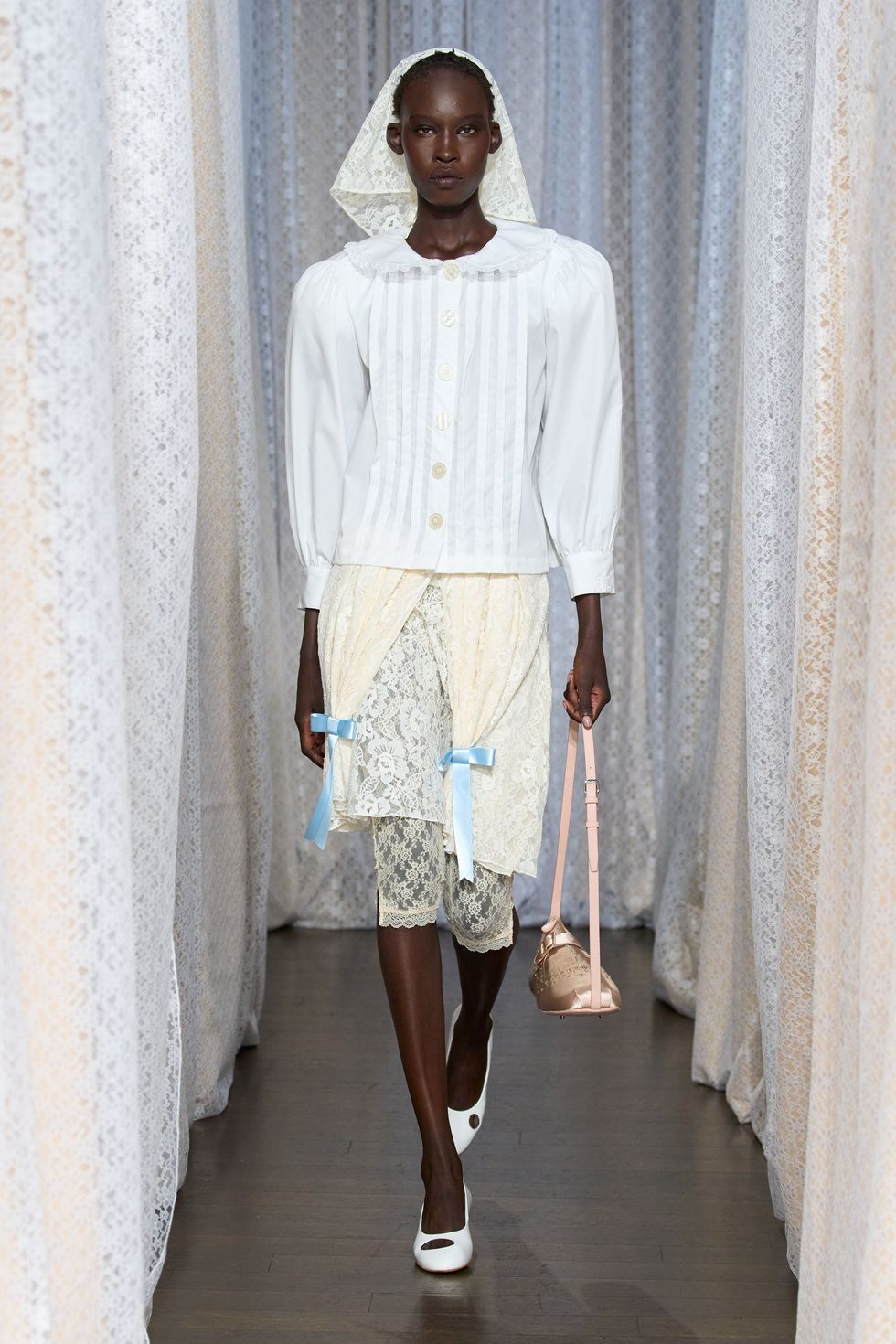
Sandy Liang Spring/Summer 2026
Sandy Liang


